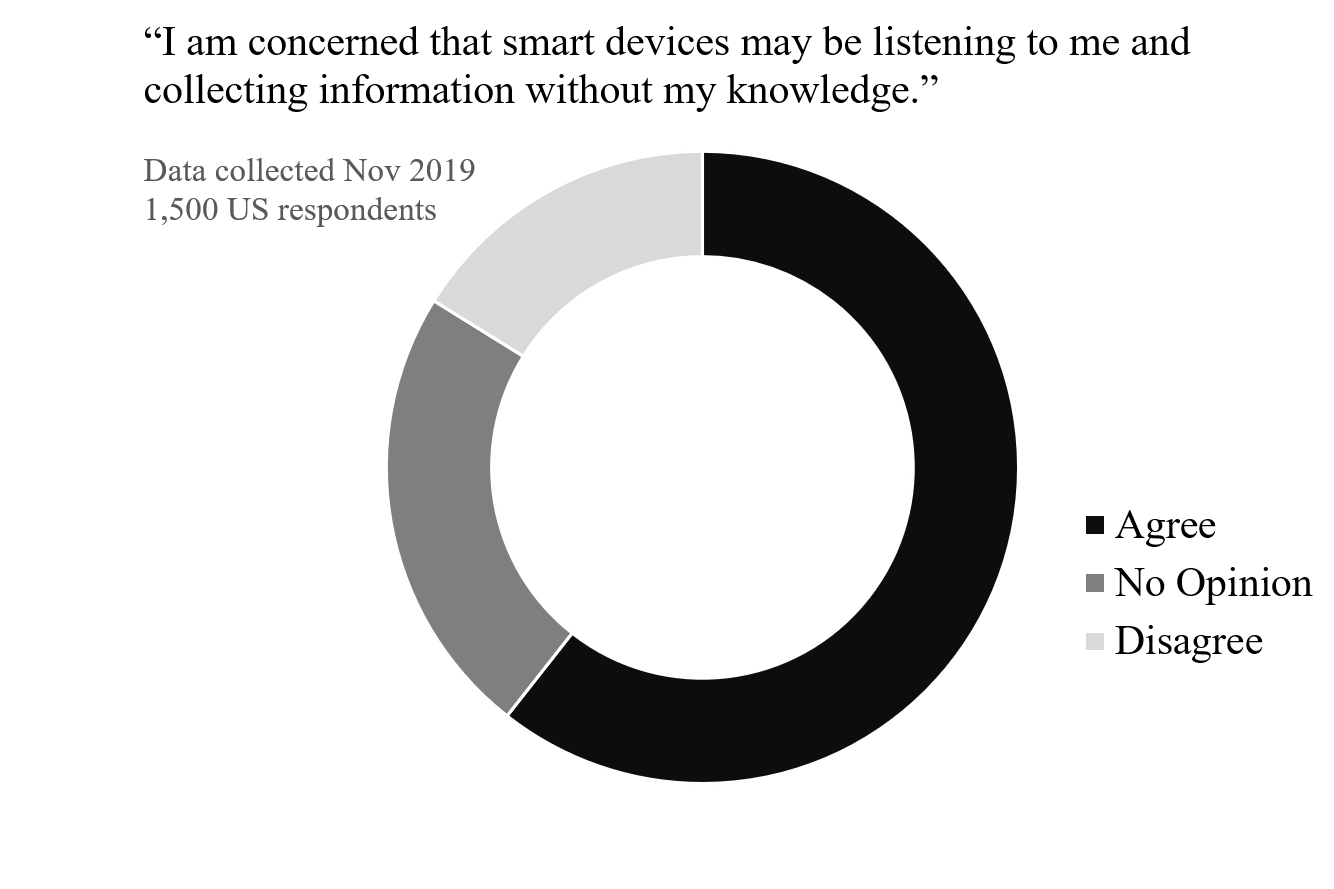From financial data, to healthcare data, to smart devices such as Alexa and the wearable devices that people wear on their wrists, consumer data trails are everywhere. But are marketers taking their customer’s data privacy seriously? And would your customer trust your brand to safeguard their data?
If you answered “yes,” you’d be in the minority. The vast majority of people across cultures and age groups that we’ve tracked over the past four years since we launched our first Culture and Technology Intersection study have responded negatively when it came to questions of data security and brand trust. We don’t want our sensitive personal data stored on servers in countries we don’t trust.

Source: Culture & Technology Intersection study, Denny Leinberger Strategy.
The tension between privacy and sharing our personal information lies at the heart of the matter. Consumers sign over unimaginable degrees of privacy the moment they tap our social apps. Beyond social, purchase decisions are likewise under a microscope. Marketers are living in an age of analytics, where every purchasing act is captured by brands seeking a more refined model of personalized selling. This isn’t a bad thing, either. Relevance is good. The problem creeps in when we view this new data-driven age against the backdrop of collapsing trust, particularly when many brands have proven themselves to be poor stewards of our data. What’s a brand to do?
Push control back into the hands of your customers
The first major macro trend we mined out of our four years of global quantitative data was what we called, “seeking control in an out-of-control world.” Yes, we’re living in an age of collapsing trust, but importantly, we’re not willing to surrender just yet. Consumers are taking active steps to wrestle back some sense of control over our digital lives, such as downloading adblocking software.
What does this mean for marketers looking to build trust while maximizing the benefits of data collection?
- Don’t ask for personal information that isn’t relevant to the transaction
- Be clear about what information is collected – and why
- Be sensitive to this issue of privacy and trust. While it’s seductive to look at every transaction as an opportunity to collect data, wherever possible, push control back into your customers’ hands and give the customer the option of providing information or not and limit how it can be used.
Show the customer the entire transparent process
Because we’re living in an age of collapsing trust, the only thing consumers are willing to believe – increasingly – is their own first-person observation: what they can see with their own eyes and hear with their own ears, and what their judgment tells them. People want the raw feed, the livestream showing what’s really happening.
For marketers, this means complete transparency into the process. If we look at Apple’s CEO, Tim Cook, and his statements about how Apple could – but won’t – monetize consumer data, we see a raw, fully transparent example of being upfront about taking privacy seriously. "The truth is, we could make a ton of money if we monetized our customer – if our customer was our product. We've elected not to do that,” Cook said in a March 2018 interview. Therefore, it’s clear that marketers must live by the rules they create. We’ve all heard the horror stories about how consumers have caught their smart devices red handed, listening in without permission and retaining sensitive information. Each of these cases was preceded by a decision made in some brand’s inner sanctum to allow it to happen.
Safeguarded data can help restore trust
Marketers need to ensure that their big, bold, aspirational message is consistent with the brand’s DNA. Marketers need their bona fides up front, where they can be verified by this technologically-immersed and hyper-militant marketplace.
This means making data collection and privacy a centerpiece of not just their communications strategies but IT infrastructures, as well. Push this message of greater control, transparency, and customization and make it a lynchpin of the customer experience. It’s perfectly acceptable to promote how a brand uses – and how it protects – customers’ data if, in fact, the brand can honestly and ethically prove this, and be held to account.
Technology has emerged as the single most profound cultural driver in the world today – but this impact has come with a cost. But for brands willing to embrace this new hunger for rawness, they will likely be rewarded with that rare and illusive commodity – greater trust.

